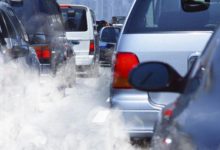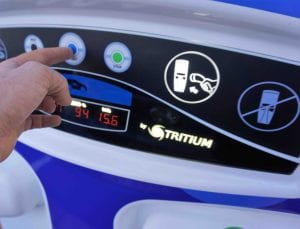We are confronted daily in the media with the violent and deadly results of crashes on our roads and the tragedy that befalls those involved.
Seat belts, improved vehicle design, drink driving legislation and other measures have seen the number of road deaths decline from a high in 1970 of almost 3,800 to 1,137 in 2018. This figure is still too high and much effort is made to reduce it.
There is, however, another menace on our roads which is largely ignored.
The Australian Institute of Health and Welfare calculated in 2011 that poor air quality causes around 3,000 premature deaths each year. The major causes are coal- fired power stations and motor vehicles.
For some pollutants there is no ‘safe’ threshold and, depending on where you live, exposure to levels of pollution known to be harmful is commonplace.
Animal models and population studies have shown that lung development is harmed by chronic exposure to traffic pollution, and many studies now point to the role of traffic pollution in higher rates of heart attacks, stroke, respiratory disease, dementia, and impaired cognition in children and even behavioural problems in adolescents.
Diesel engine emissions are a Class 1 Carcinogen, meaning it is likely they are capable of inducing cancer. Yet awareness of this problem is missing in Australia. Two recent television news items illustrate this failing.
One story concerned a class action against Toyota over claims its top selling Hilux and Prado have faulty diesel particulate filters or DPFs.
The story featured a man whose DPF caused the breakdown of his car and spoilt his road trip, but failed to mention that DPFs do fail, diesel emissions are carcinogenic, and the cars we import have very poor emission controls because they are allowed to under our weak vehicle emission standards.
The other story raised the possibility that screening for early lung cancer could prevent many deaths, and while correctly stating that smoking is still the leading cause of lung cancer, the story should have said that we are all, including children, also breathing toxic exhaust fumes during that daily commute in peak hour.
It is not just commuters who are exposed to traffic pollution.
Besides houses and office blocks, many schools and hospitals are located on main roads with a high traffic load. Pollution at such close proximity is unlikely to be reflected accurately by most pollution monitors which are typically situated further away.
Doctors for the Environment Australia and other health organisations have called for roadside monitoring, now made easier with modern equipment.
Pollution at the kerbside can be up to 14 times higher than the background levels. A large Vancouver study showed that living within 150 metres of a major highway significantly increased the risk of heart attack. Children are particularly at risk from air pollution.
The Australian Child Health and Air Pollution Study has revealed a strong association between nitrogen dioxide exposure and asthma.
Australia’s air quality standards for nitrogen dioxide, sulphur dioxide, and ozone are up for review, as they are two decades out of date, and present standards are not acceptable in light of what is now understood about the harm. Even so, proposed new standards are unambitious when it is recognised that it is now possible to have much tougher standards at little extra cost.
It is time for government to join the dots. The Ministers of Environment, Transport, and Health at both levels of government need to recognise that it is about more than “congestion busting”. The Minister for Environment in 2014, Greg Hunt, said then :-
“Urbanisation and population growth, and the associated increases in transport demand and energy consumption, will likely result in increased emissions and poorer air quality.”
Now, in 2019, it is business as usual. The Ministerial Forum on Vehicle Emissions, established in 2015, has achieved so far almost nothing. A plan to reduce the sulphur limit in fuel will not start until 2027.
Public transport is being neglected in some States in favour of so-called “congestion busting” road projects (which attract more cars), electric vehicle targets are mocked by government ministers, and Australia’s vehicle emission standards are stalled at the bottom of the OECD. The opportunity to not only improve air quality but lower greenhouse gas emissions from transport goes begging.
Doctors for the Environment Australia, the Royal Australian College of Physicians and other health organisations along with Environmental Justice Australia have recently issued a joint position statement calling for stronger national air pollution standards, while the Electric Vehicle Council, and Asthma Australia, are calling for improved air quality and vehicle emission standards.
Australian governments can no longer ignore this important health issue.
The review of ambient air quality standards by Australia’s environment ministers is an opportunity for Australia to adopt international best practice and improve the air we breathe, and with it our health and our quality of life.
Dr Graeme McLeay is a member of Doctors for the Environment Australia










